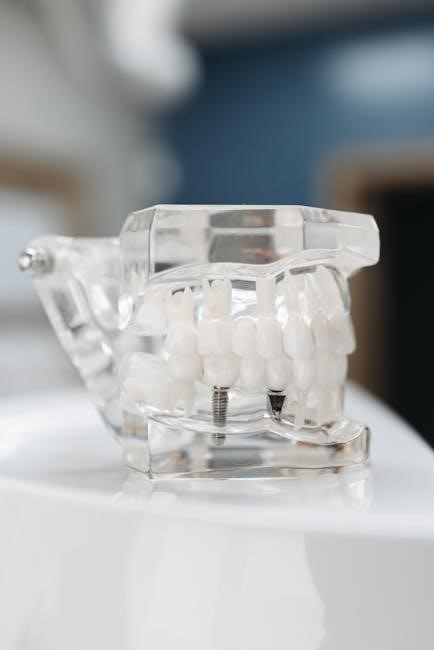
denture teeth shape guide
Understanding Denture Teeth Shape Guide
A denture teeth shape guide helps determine the most suitable tooth form, ensuring a natural appearance and proper function. It considers facial structure, bite, and aesthetic preferences to create a harmonious smile, enhancing both comfort and confidence for individuals with missing teeth.
Denture teeth shape plays a crucial role in restoring both function and aesthetics for individuals with missing teeth. The shape of denture teeth is tailored to match natural dental anatomy, ensuring proper bite, chewing efficiency, and a natural-looking smile. Dental professionals consider factors like facial structure, jaw alignment, and personal preferences when selecting tooth shapes. The goal is to create a seamless transition between artificial and natural teeth, enhancing comfort and confidence. Modern denture teeth come in various shapes, such as oval, square, and tapered, each offering unique benefits. Understanding tooth shape is essential for achieving a balanced, functional, and visually appealing denture solution.
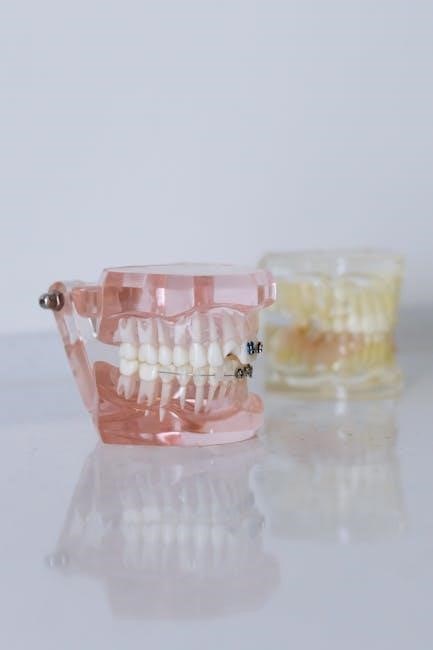
Importance of Tooth Shape in Dentures
The shape of denture teeth significantly impacts both the functionality and aesthetics of dentures. Properly shaped teeth ensure efficient chewing, clear speech, and a natural appearance. Tooth shape influences how forces are distributed during biting and chewing, affecting comfort and stability. Misshapen teeth can lead to uneven wear, difficulty speaking, and discomfort. A well-chosen tooth shape enhances facial aesthetics, restoring a natural smile and boosting confidence. Dental professionals carefully select tooth shapes that align with the patient’s facial structure and bite, ensuring optimal performance and satisfaction. The right tooth shape is essential for achieving a denture that functions like natural teeth and blends seamlessly with the patient’s overall appearance.
Factors Influencing Denture Teeth Shape
Facial structure, bite alignment, and aesthetic preferences are key factors influencing denture tooth shape. These elements ensure a natural appearance and proper function, tailored to individual needs.
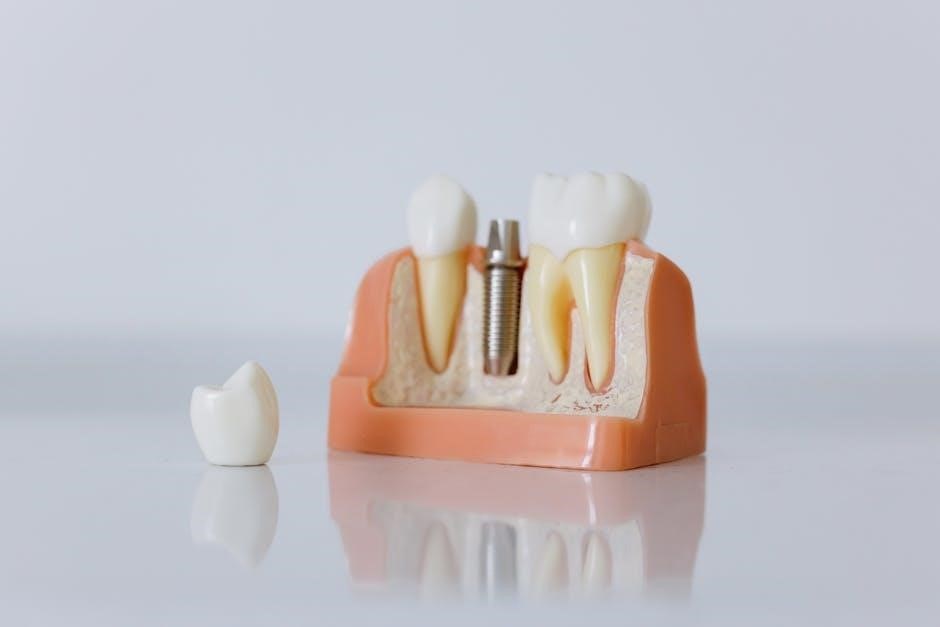
Facial Structure and Tooth Shape
Facial structure plays a crucial role in determining the appropriate shape of denture teeth. The shape of the face, whether round, square, or oval, influences the selection of tooth forms to ensure harmony and balance. For individuals with a round face, oval-shaped teeth are often recommended to create a softer, more proportional appearance. Conversely, square faces may benefit from square or tapered tooth shapes to enhance definition and angularity. The dentist assesses facial contours, jaw alignment, and lip shape to recommend the most complementary tooth form. This personalized approach ensures that the dentures blend seamlessly with the individual’s natural aesthetics, providing both functional and cosmetic satisfaction. Proper alignment and balance are key to achieving a natural, confident smile.
Bite and Occlusion Considerations
Bite and occlusion significantly influence denture tooth shape selection. The alignment and interaction between upper and lower teeth must be carefully considered to ensure proper chewing function and a natural appearance. A balanced occlusion is essential for even distribution of biting forces, preventing uneven wear and instability; Dentists analyze the patient’s bite to determine the most suitable tooth shapes that restore proper occlusion without compromising aesthetics. The chosen tooth forms should complement the existing jaw alignment and facial structure, ensuring a comfortable and functional fit. Proper alignment enhances chewing efficiency, maintains surrounding tissues’ integrity, and supports long-term oral health, leading to increased patient satisfaction and improved quality of life.
Types of Denture Teeth Shapes
Denture teeth shapes include oval, square, and tapered options, each chosen for their aesthetic appeal and functional benefits, ensuring a natural appearance and optimal chewing efficiency.
Oval Tooth Shape
Oval-shaped denture teeth are the most popular choice due to their natural and versatile appearance. This shape complements a variety of facial structures, especially round or oval faces, creating a harmonious smile. The soft, rounded edges of oval teeth blend seamlessly with the surrounding facial features, making them ideal for both men and women. They are particularly suitable for individuals seeking a subtle, non-dramatic transformation. Oval teeth also offer a balance between aesthetics and functionality, providing a comfortable chewing surface without appearing too sharp or aggressive. Their moderate width and height make them adaptable to various dental arch forms, ensuring a tailored fit. Overall, oval-shaped teeth strike a perfect balance between natural beauty and practicality, making them a preferred option for many denture wearers.
Square Tooth Shape
Square-shaped denture teeth are characterized by their sharp, defined edges and angular appearance, creating a bold and youthful smile. This tooth shape is ideal for individuals with square facial structures, as it complements their features and enhances facial symmetry. Square teeth are often chosen for their vibrant, modern look, making them a popular choice for younger patients or those seeking a more dynamic aesthetic. However, they may not suit round or oval faces, as they can accentuate angularity. While square teeth are durable and less prone to chipping, they may feel less natural for grinding food due to their sharp edges. Despite this, their striking appearance makes them a favored option for those looking to make a strong visual statement with their smile.
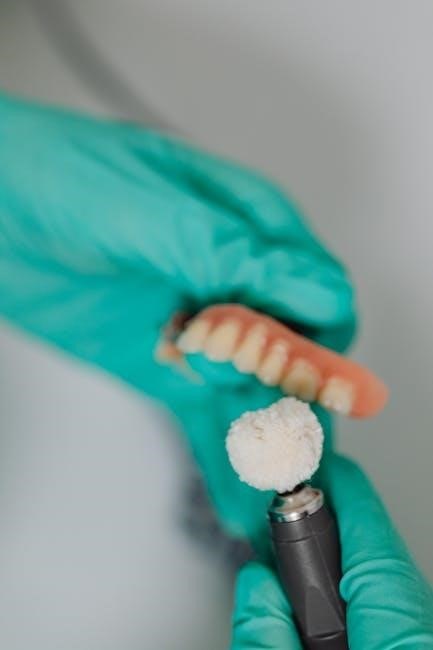
Tapered Tooth Shape
Tapered denture teeth are narrower and more pointed, with a triangular shape that creates a distinctive, youthful appearance. This tooth shape is often recommended for individuals with specific facial structures or those seeking a unique aesthetic. Tapered teeth are commonly used in cases where side teeth are missing, as they blend seamlessly with natural teeth. They are also favored for their ability to enhance facial contours, particularly in patients with angular or heart-shaped faces. While tapered teeth offer a striking visual appeal, they may not be as durable as other shapes due to their pointed tips, which can be prone to wear. Despite this, they remain a popular choice for those looking to achieve a refined, sophisticated smile tailored to their individual needs.
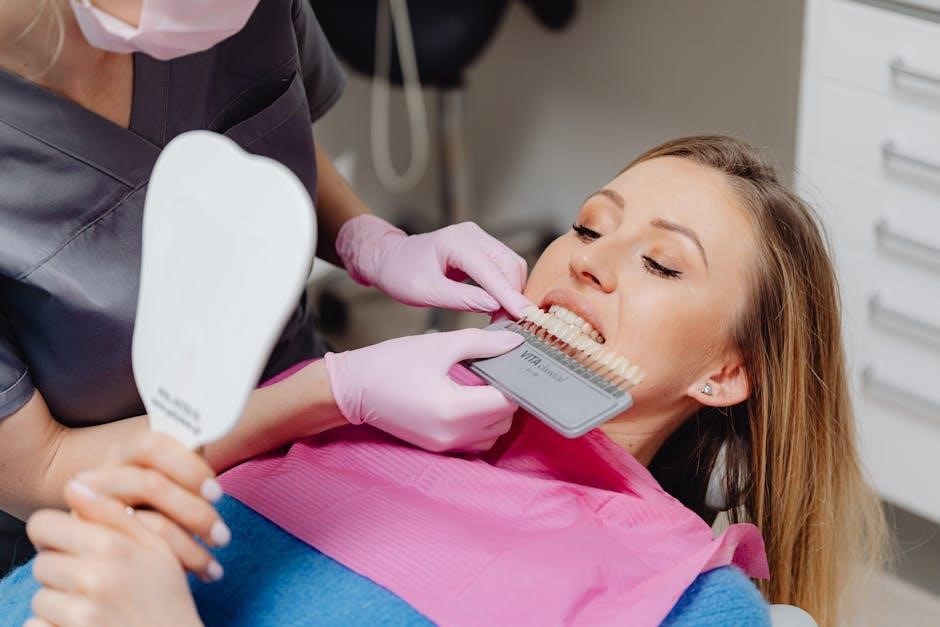
Materials and Durability
Denture teeth are made from acrylic or porcelain, with acrylic being more common due to its ease of adjustment and cost-effectiveness. Porcelain teeth, while more durable, are less frequently used due to their brittleness.
Acrylic vs. Porcelain Denture Teeth
Acrylic and porcelain are the primary materials for denture teeth, each offering distinct advantages. Acrylic teeth are lightweight, easy to adjust, and cost-effective, making them a popular choice. Porcelain teeth are more durable and resistant to wear, providing a longer lifespan. However, porcelain is heavier and more brittle, increasing the risk of chipping. Acrylic teeth are ideal for patients seeking affordability and comfort, while porcelain suits those prioritizing durability and a natural appearance. Both materials are customizable in shape, size, and color to match natural teeth. The choice depends on individual needs, budget, and oral conditions, ensuring optimal function and aesthetics for denture wearers.
Impact of Material on Tooth Shape
The material used for denture teeth significantly influences their shape. Acrylic teeth are more flexible and easier to mold, allowing for highly customizable shapes that can be tailored to individual facial structures. Porcelain teeth, while more durable, are less flexible and may limit certain shape options due to their rigidity. The choice of material affects not only aesthetics but also functionality, as the shape must align with the patient’s bite and occlusion. Dentists often consider the material’s properties when selecting tooth shapes to ensure optimal fit and comfort. This balance between material and shape is crucial for achieving natural-looking and functional dentures.
Selection Process for Denture Teeth
The selection process involves a dentist assessing facial structure, bite, and aesthetic preferences. A try-in phase allows patients to test tooth shapes, ensuring comfort and satisfaction before finalizing the dentures.
Dentist’s Role in Tooth Shape Selection
The dentist plays a crucial role in selecting the appropriate tooth shape for dentures, ensuring a natural appearance and proper function. They assess the patient’s facial structure, bite, and aesthetic preferences to recommend suitable shapes. Collaboration with dental laboratories allows for customization, considering factors like gum color and tooth alignment. The dentist also guides patients through the try-in phase, making necessary adjustments to achieve comfort and satisfaction. Their expertise ensures that the chosen tooth shape enhances both the functionality and aesthetics of the dentures, providing a personalized solution tailored to the patient’s needs and preferences.
Try-In Phase and Adjustments
The try-in phase is a critical step in the denture fabrication process, allowing patients to test the fit, aesthetics, and functionality of their dentures before finalization. During this phase, the dentist assesses the denture’s alignment with the patient’s bite and facial structure, ensuring a natural appearance. Adjustments are made to refine the fit, address comfort concerns, and achieve the desired aesthetic outcome. This step ensures that the denture meets the patient’s expectations and needs, providing a seamless transition to wearing the final product. The try-in phase is essential for making any necessary modifications, ensuring the denture is both functional and visually appealing. It is a collaborative process between the dentist and the patient to achieve optimal results.
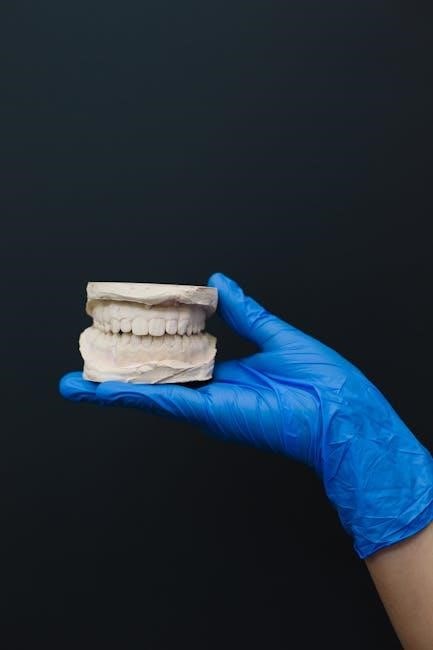
Cost Considerations
Cost considerations for denture teeth involve material quality, durability, and customization. Porcelain teeth are more expensive but offer superior aesthetics and longevity, while acrylic options are budget-friendly.
Budget-Friendly Options for Denture Teeth
Budget-friendly options for denture teeth focus on affordability without compromising essential functionality. Acrylic teeth are a cost-effective choice, offering durability and a natural appearance. They are widely available and can be shaped to match various tooth forms, making them a popular option for those seeking economical solutions. Additionally, pre-made denture sets and boil-and-bite options provide affordable alternatives for self-fitting at home. These options are ideal for individuals with limited budgets, as they reduce the need for extensive customization. However, while they are more affordable, they may lack the longevity of high-end materials like porcelain. Dentists often recommend these options for temporary or partial solutions, ensuring patients can achieve a functional smile while staying within their budget. Balancing cost and quality is key in selecting affordable denture teeth.

High-End Customization Costs
High-end customization for denture teeth involves premium materials and advanced techniques, resulting in a more natural and personalized smile. Porcelain teeth, known for their durability and realistic aesthetics, are often used in high-end options. These teeth are custom-shaped and colored to match individual facial features and skin tone, ensuring a seamless appearance. The process typically involves detailed impressions and precise craftsmanship, which increases the cost. Dentists and dental laboratories may charge more for these bespoke solutions due to the time and expertise required. While the initial investment is higher, high-end customization offers long-lasting results and superior comfort, making it a worthwhile option for those seeking the best possible outcome for their denture teeth.